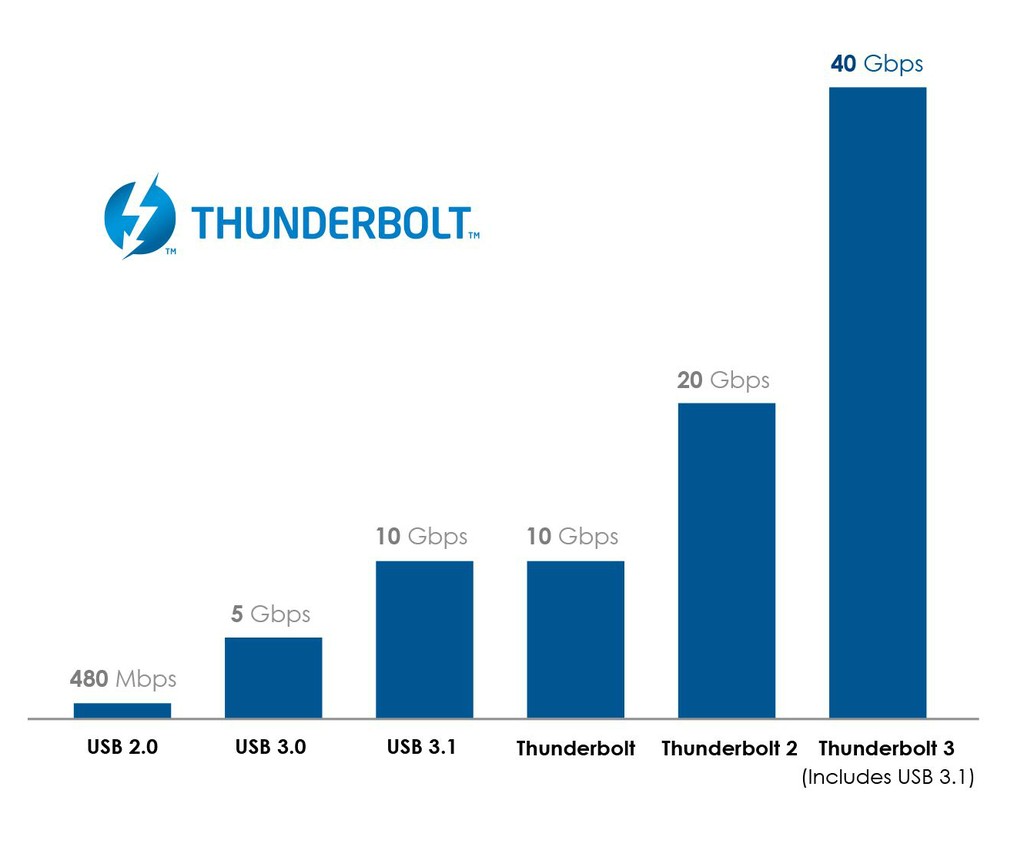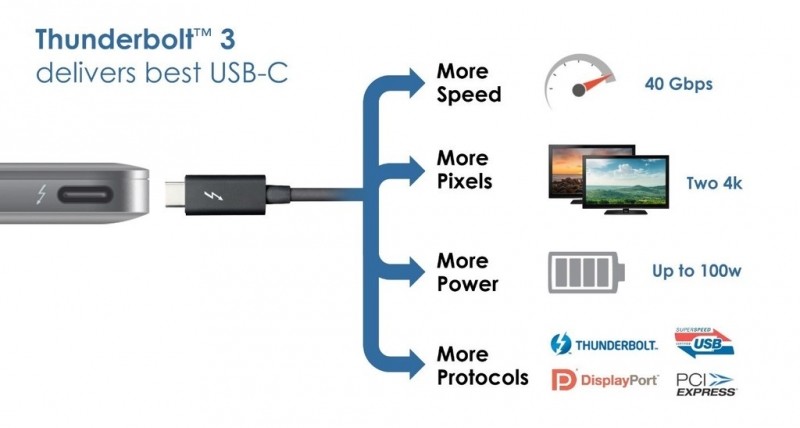At Computex 2015, Intel has announced Thunderbolt 3, a new iteration of the company's high bandwidth hardware interface. And for the first time, Intel has ditched Thunderbolt's proprietary connector, instead opting to funnel everything through the soon-to-be-ubiquitous USB Type-C connector.
Thunderbolt 3 doubles the bandwidth of Thunderbolt 2, providing 40 Gbps of throughput through the small, reversible Type-C connector. Due to the increase in bandwidth, Thunderbolt now supports a whole range of new protocols and features, essentially making it a better version of USB.
For starters, Thunderbolt 3 will fully support USB 3.1, which only requires a measly 10 Gbps of bandwidth for full functionality. It will also support power delivery based on the USB standard, allowing a Thunderbolt 3 device to receive 100W of power through the port, or to send out 15W of power to connected devices.

Thunderbolt 3 also supports PCI Express 3.0 x4, meaning it can act as a connector to external graphics boxes for notebooks in a similar way to Alienware's proprietary solution. It also supports eight lanes of DisplayPort 1.2, allowing two 4K 60 Hz displays to be connected to the one Thunderbolt 3 port and used simultaneously.
Networking is supported through Thunderbolt 3, providing a 10 Gb Ethernet connection between computers. And as always, daisy chaining allows six devices to be chained together through a series of Thunderbolt 3 cables.
Intel states that Thunderbolt 3 products will begin to hit the market before the end of the year, with wider availability slated for 2016. Now that it supports USB 3.1, PCIe 3.0 x4, and DisplayPort through a USB Type-C connector, it could just become the hardware interface of choice.
